Affiliate links on Android Authority may earn us a commission. Learn more.
What is cloud gaming?
Published onMarch 9, 2020
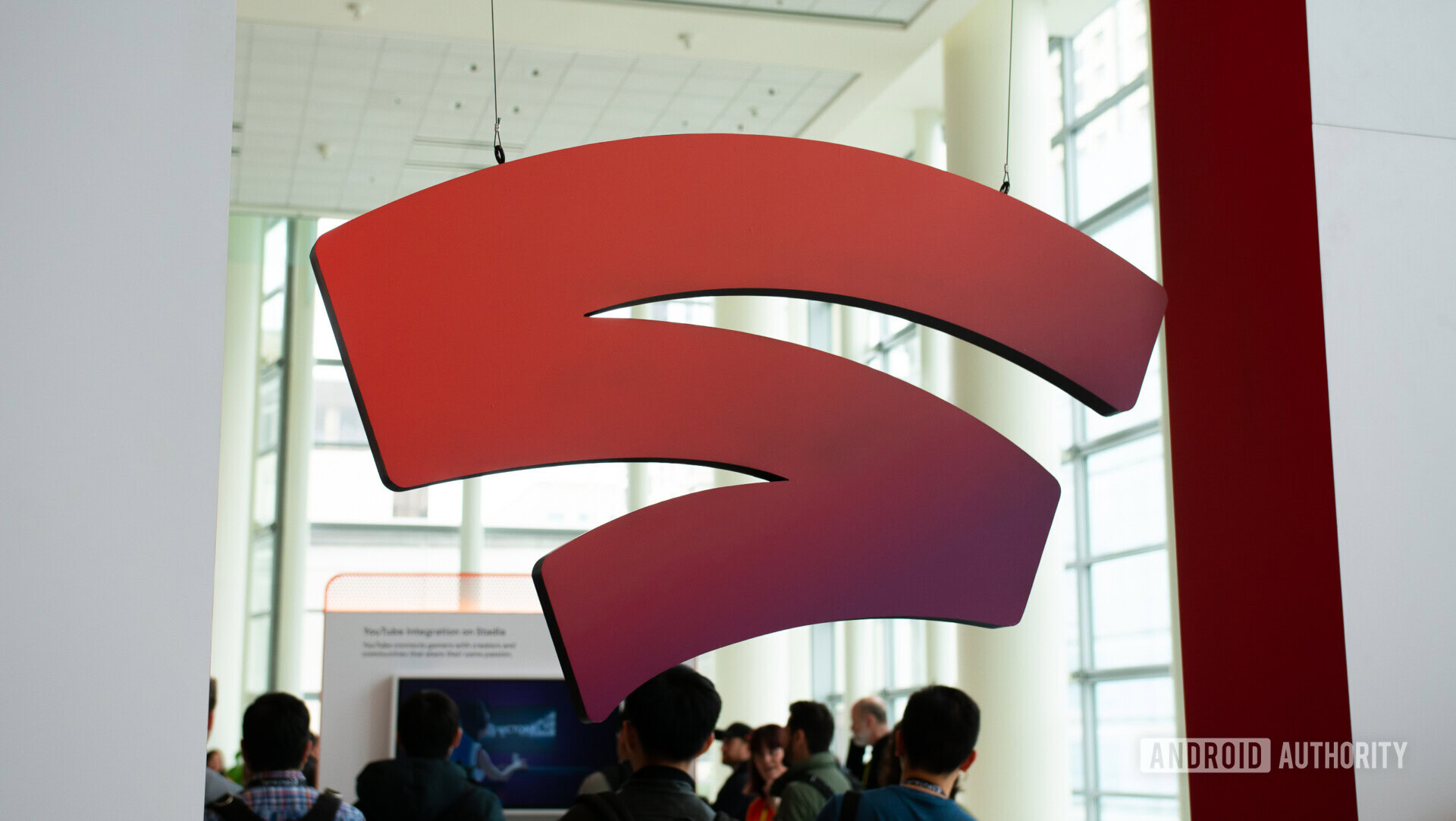
Cloud gaming has been a buzzword haunting the video game industry for almost a decade, but now it’s becoming more than that. With services like Google Stadia and GeForce Now already available to the public, it’s just a matter of time before cloud gaming (or game streaming) carves out a larger part of the gaming industry.
Read also: Google Stadia vs GeForce Now: Which game streaming service is right for you?
It’s important to note that although cloud gaming often allows you to play the same AAA games as other platforms, it differs from traditional consoles and PCs in very significant ways. So what is cloud gaming and how does it work? Let’s break it down.
What is cloud gaming?
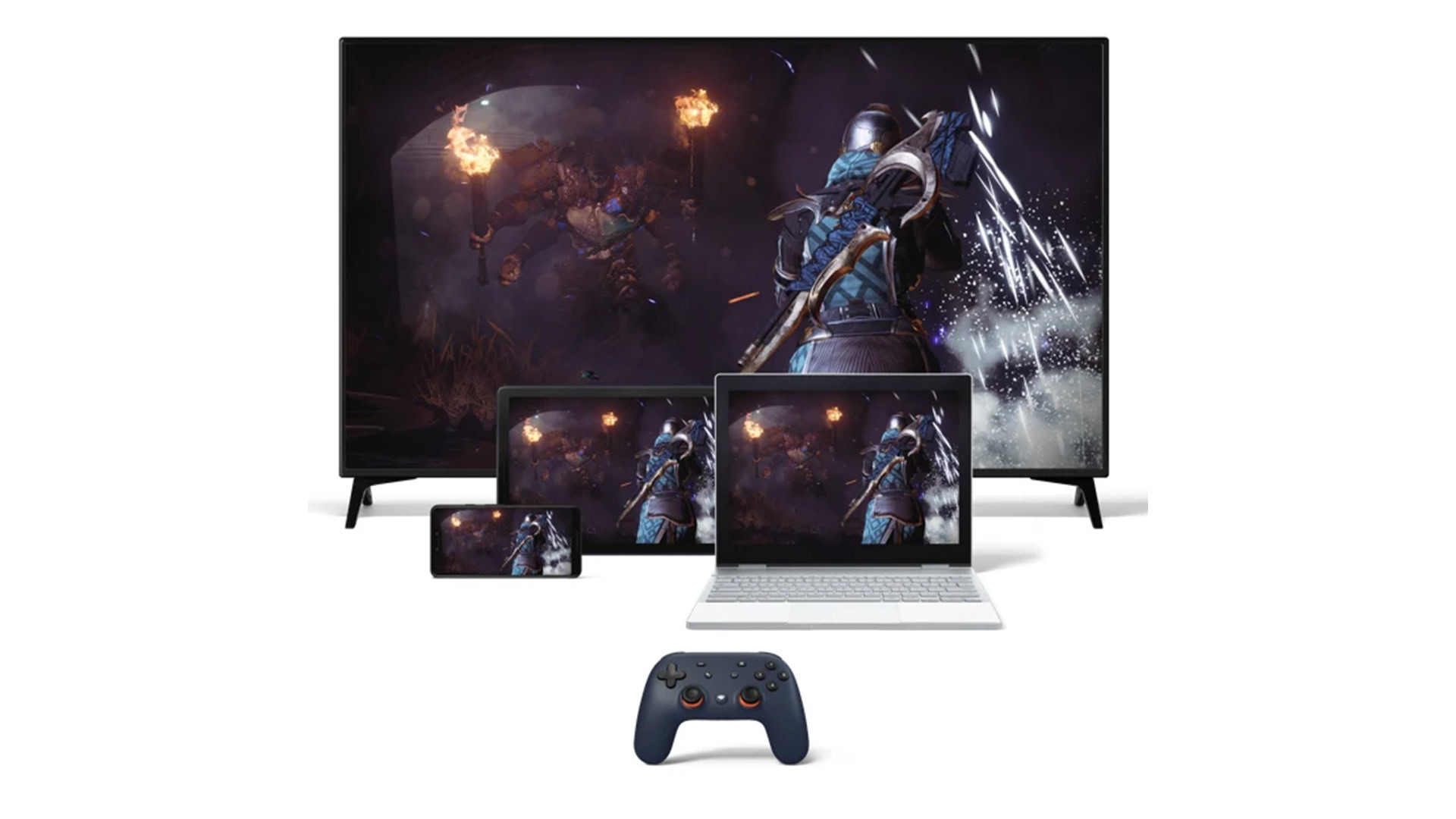
Also known as game streaming, cloud gaming refers to using cloud servers, rather than local devices, to run games. Essentially, the goal is to make high-end gaming experiences simpler and cheaper to access.
There are two major advantages to the cloud gaming approach. The first is that users don’t have to buy new hardware every few years in order to run the latest and greatest games. The other is that it theoretically allows users to play any game on any device with a screen and an internet connection.
Cloud gaming has been around for nearly a decade now, but it hasn’t caught on until recently. Even if early services worked pretty well, they ultimately lacked support and a user base. There were also a lot of early kinks like not supporting Wi-Fi, as internet speeds were on average too slow, even in 2012.
Gone are the days of troubled early cloud gaming services like Gaikai or OnLive. Now we live in the era of big companies like Google, Sony, and Microsoft getting in on the action. With even next-gen consoles lined-up to offer game streaming support, this is certainly where the industry is headed.
How does cloud gaming work?
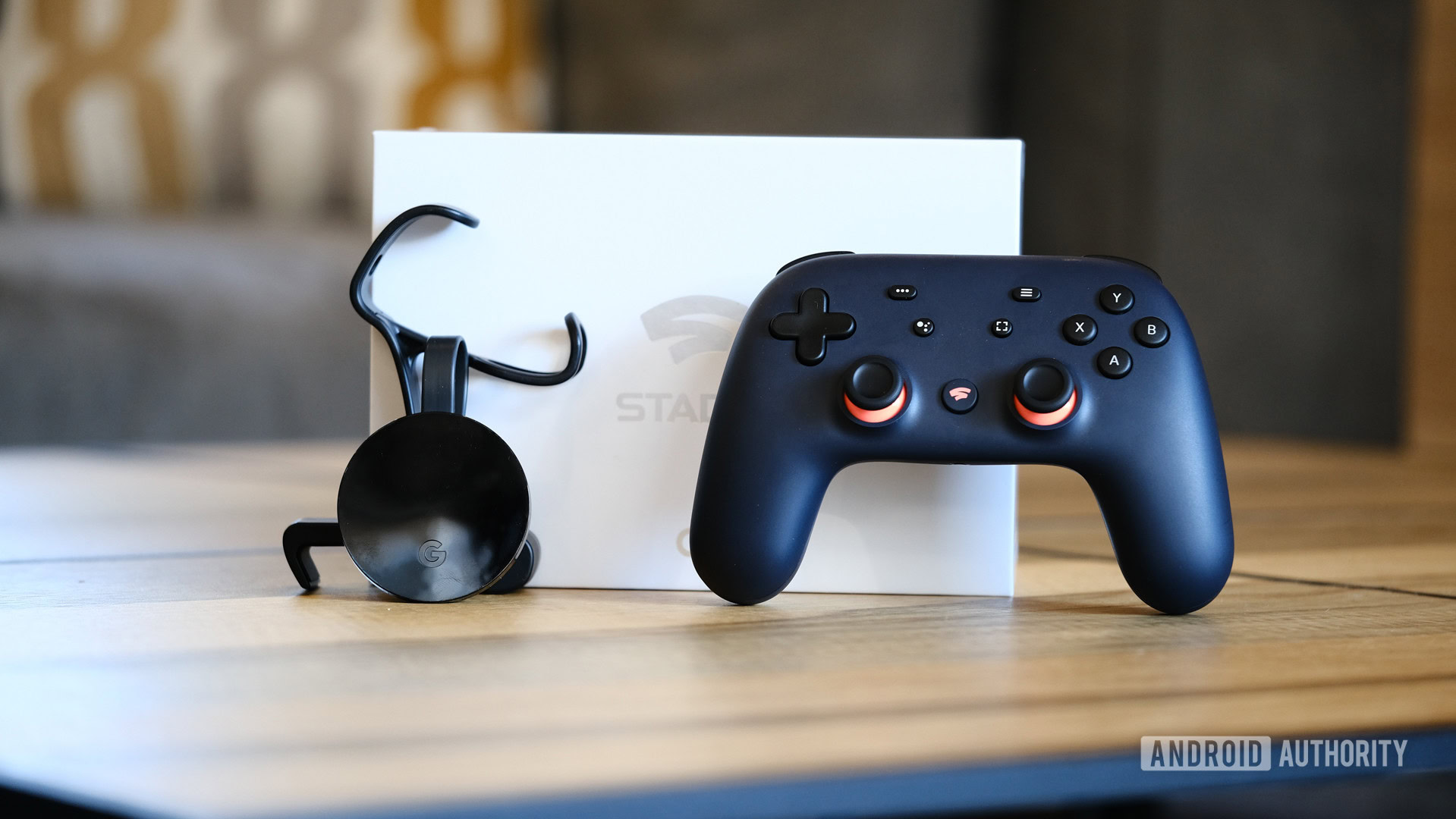
Many people stream their movies these days, rather than buying DVDs or Blu-Ray discs — heck, most computers (and some game consoles) don’t even come with disc drives anymore. Game streaming works similarly, at least in principle.
Rather than owning the hardware necessary to run high-end (or really any) video games like a gaming PC or console, game streaming lets users offload the processing demands to a company’s server. Basically, when you start running a game using a cloud gaming service, rather than sticking a disc in your box at home or booting up an app you have installed, a server acts like a high-powered PC somewhere and does that for you, streaming a feed of the game from tens or hundreds of miles away.
Game streaming adds input lag, but with the right conditions it's indistinguishable from local gaming.
Take Google Stadia, which uses proprietary tech based on Linux. When you log into the service and pick a game to play, a super-powerful server at one of the company’s data centers starts running it. The server then sends a feed of that game running from the data center to your home where you can interact with it via the Chrome browser, a supported phone or Chrome OS tablet, or a Chromecast Ultra.
Using a controller or mouse and keyboard, the service logs your inputs and sends them back to the server, which then carries them out and streams the result back to you. This process does add some input lag, but with the right home network conditions, it’s virtually indistinguishable from a local gaming machine.
Read also: Cloud gaming is the future (whether you like it or not)
Other cloud gaming services work very similarly. Playstation Now obviously bases its tech on PlayStation 4 architecture, and Microsoft’s xCloud uses Xbox hardware in the cloud. Other options like Shadow, GeForce Now, and Vortex use PC hardware, and support gamepads as well as mouse-and-keyboard configurations.
Regardless of the input method, the principle remains the same. The services run a game on a server, log your inputs remotely, and stream back the result. Of course, getting this to work and remain playable is incredibly complicated. Internet speeds have only recently increased to the point where this kind of service could be widely accessible, and there are still plenty of connection and compatibility limitations.
Most services support PC, Mac, and Android devices, with iOS development lagging a big behind. Results on Wi-Fi will vary depending on your router and connection, but wired connections offer the best experience on all services. For now, playing on LTE offers mixed results for the few services that offer it, but the rise of 5G may turn the tables for mobile game streaming with ultra-low latency, high bandwidth connections.
How much does cloud gaming cost?
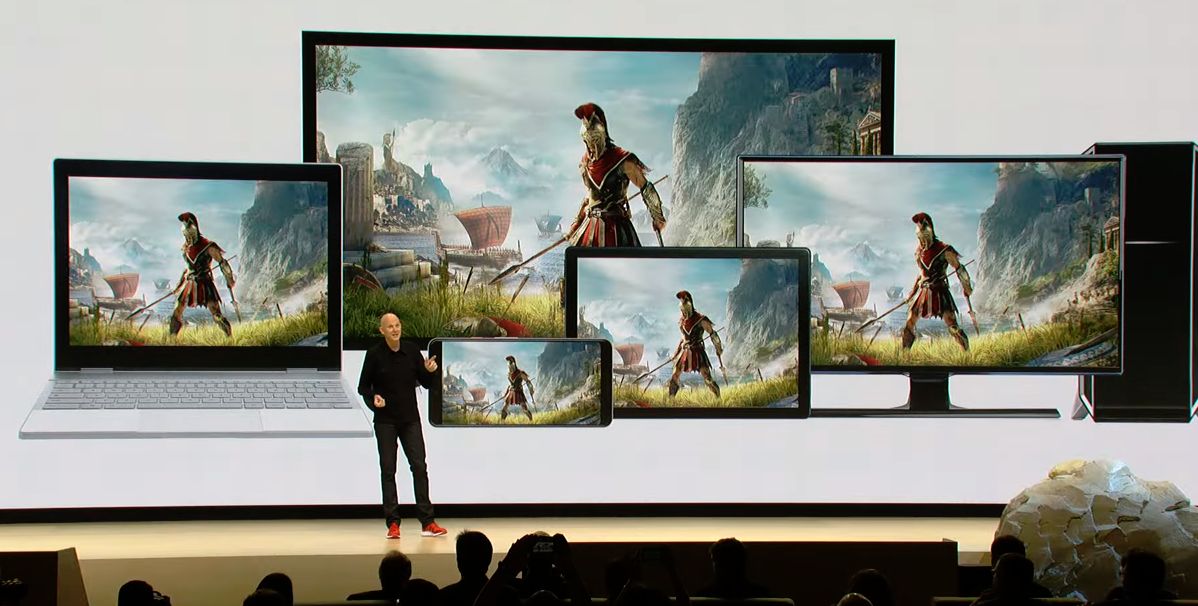
A big part of the appeal of cloud gaming is how much less someone will have to pay to enjoy a high-end gaming experience, but figuring out how much it actually all costs can get pretty complicated.
Despite the similarities between streaming games and streaming movies or shows from Netflix from a consumer perspective, the business models vary greatly. Currently, the main cloud gaming service that dips into Netflix-for-games model is PlayStation Now, although Microsoft is rumored to be doing the same with xCloud and Xbox Game Pass. Vortex uses a similar model, but still requires separate purchases for most AAA games.
With this model, you pay a single subscription fee to stream a library of games that changes over time. There is a risk that your favorite games will be removed from the library in the future, but it does ensure you’ll always have something to play for a low monthly fee.
Google takes a more traditional approach with its cloud gaming service Stadia. Games must be purchased individually, although you can get one or two games added to your library every month as a Stadia Pro subscriber. This service costs $9.99 per month, but it also unlocks 4K streaming and 5.1 surround sound.
Read also: The potential hidden costs of Google Stadia
For now, only Stadia Pro subscribers have access to the service, with a free Stadia Base tier slated for release in the coming months. With Stadia Base you can play any games you’ve purchased on the platform without paying a monthly fee, although at a slightly lower quality (1080p).
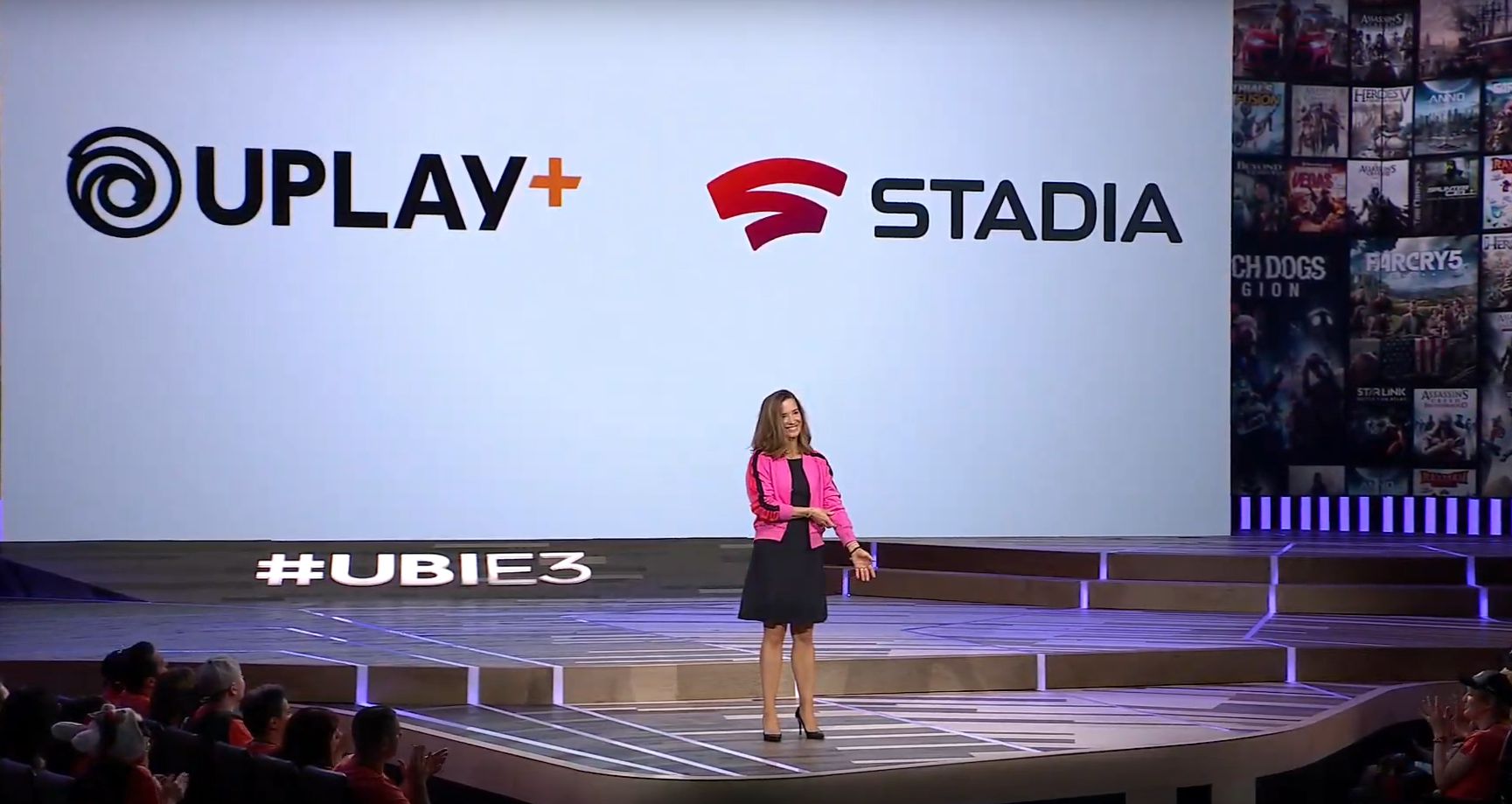
Stadia will also partner with publishers in the near future to bring their subscription services to the platform. This means that for an additional monthly fee, you could stream games from Ubisoft’s UPlay Plus or EA Access through Stadia. These monthly fees could add up quickly, but we won’t know exact pricing until more details emerge later this year.
The final cloud gaming model relies on established game marketplaces to function. You essentially pay a monthly fee for access to a virtual machine to run games you’ve already purchased on Steam, Epic Games Store, or directly from publishers like Blizzard. The game installs on a PC in the cloud using your license and streams from there to your device.
GeForce Now, Shadow, and to a lesser extent Vortex all use this structure. Although it appears to lower the bar of entry for gamers with an existing library, it may run into trouble with game publishers and developers. GeForce Now is currently struggling with this, with major publishers like Activision, Blizzard, Bethesda, and 2K pulling their games from the service.
Other costs of cloud gaming
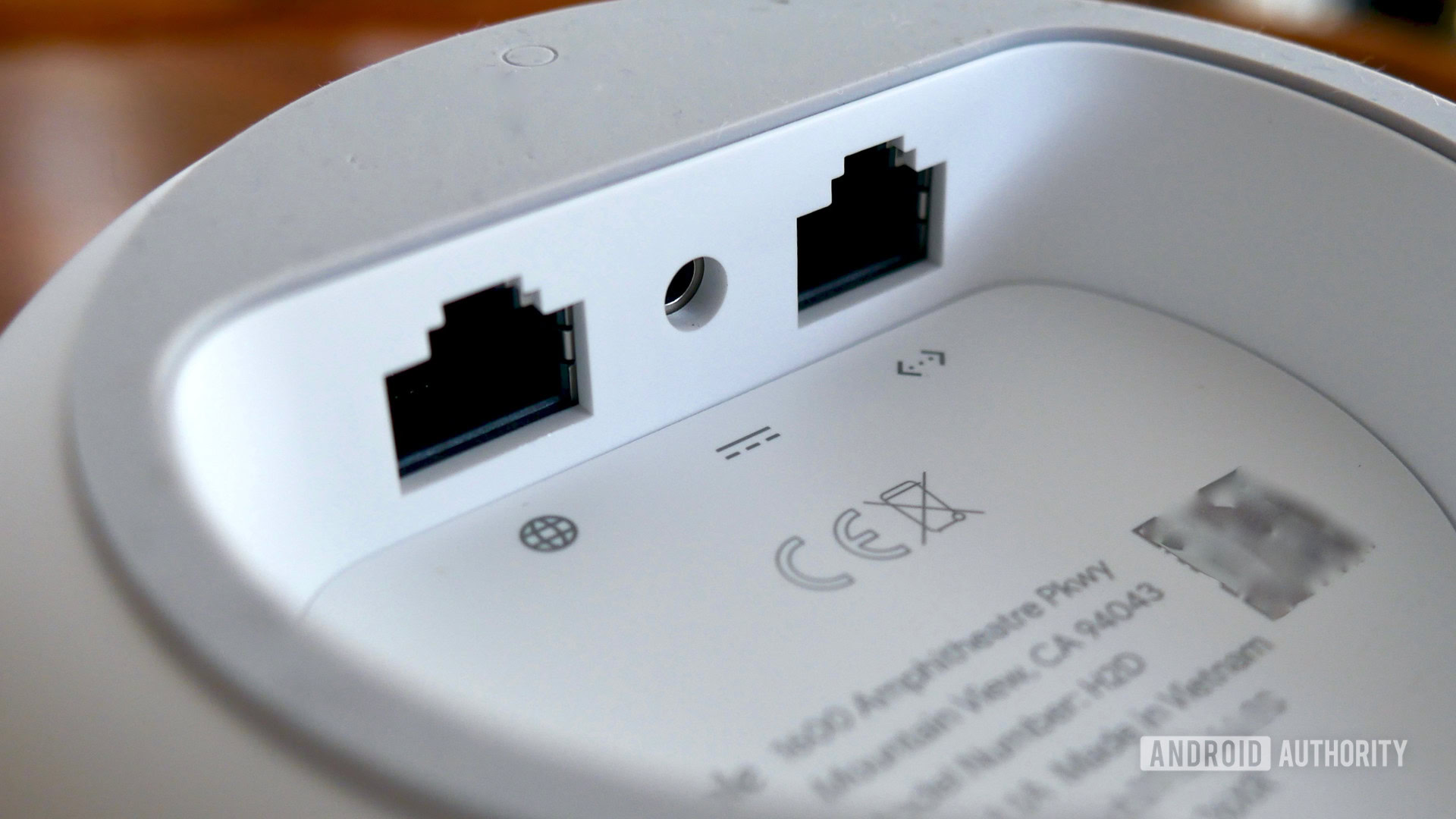
Apart from the direct costs of these services, there are other factors to bear in mind. Few people think of the burden that streaming video puts on their connections, but game streaming is a completely different beast.
The bandwidth requirement of streaming games is considerably higher than streaming video. If you’ve got a bandwidth cap, slow speed internet, or both, odds are you’ll need a new internet plan to stream games. Google Stadia recommends minimum speeds of 20Mbps for 1080p gaming at 60fps, jumping up to 35Mbps for 4K 60fps. Other cloud gaming services require slightly less, but the best results are typically found with a connection around 100Mbps.
Read also: How much data does Netflix actually use?
That seems reasonable if you live in an urban area where cheaper plans comfortably exceed that. However, if you’ve got a cap on that, Stadia can burn through nearly 25GB per hour when streaming in 4K. GeForce Now can consume even more on default settings, but offers lower bitrates to reduce data consumption. Cloud gamers are going to burn through data caps pretty quickly at that rate, which can incur added fees and potentially require a more expensive internet plan.
Additionally, the latency requirements of cloud gaming could put a strain on a lot of people’s routers and may prompt upgrades. Lag doesn’t always come from a slow internet connection — packet loss often originates at the router, rather than the server.
Aside from routers, certain cloud gaming services require extra purchases to work on certain devices. To play Stadia on a TV, you’ll need a Chromecast Ultra and Stadia controller. Likewise with GeForce Now and an NVIDIA Shield TV box. Playstation Now is the most egregious, requiring a PlayStation 4 console to stream games on a TV.
Regardless, cloud gaming is likely to save you money compared to buying an expensive gaming laptop or PC. Next-gen consoles might fare better in a head-to-head price comparison over time, although they will inevitably be tethered to a single location.
What kind of Cloud Gaming services are there?
Cloud gaming tech has existed for a while already, but there are a few services that clearly have a heads-up on the competition. Here are the ones worth knowing about in 2020:
Google Stadia
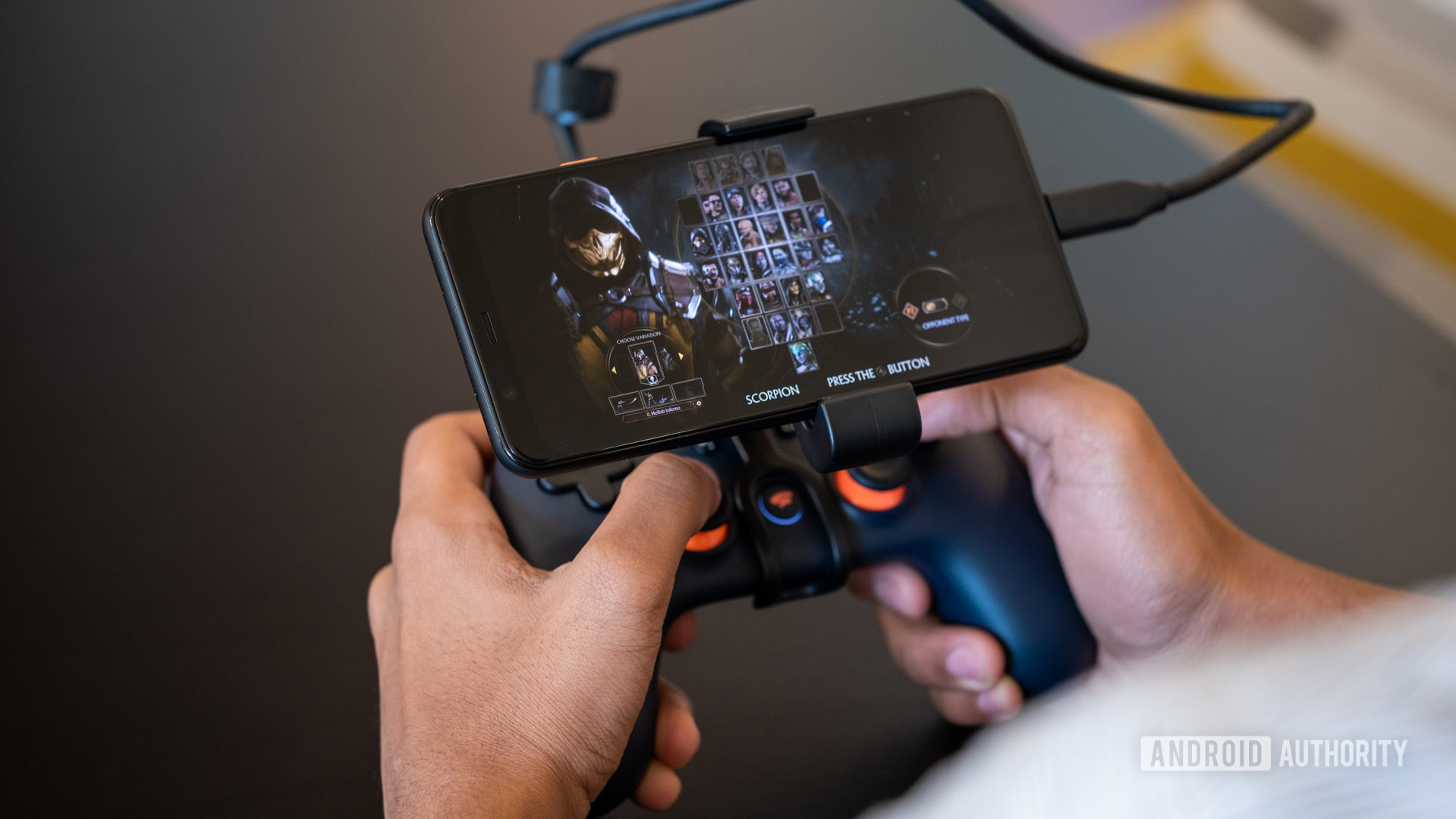
Stadia is perhaps the biggest name in cloud gaming at the moment, although it’s still ramping up to a full release. It launched in a limited capacity in late 2019, although to play today you will need to buy the $130 Premiere Edition, which comes with a Stadia controller, a Chromecast Ultra, three months of Stadia Pro, and two buddy passes to give three months of service to a friend.
Stadia Pro costs $9.99 a month and unlocks one or two games a month to play as long as you’re a subscriber. There are currently more than 30 titles available for purchase on the platform, with well over 100 more scheduled for release this year. Check out our full Stadia review at the link below and stay tuned for more news on the free Stadia Base tier in the coming months.
Read also: Google Stadia review: This is the future of gaming, if you have the data for it
Google Stadia is available for PC, Mac, Linux, Chromebooks, TVs via Chromecast Ultra, and select Android devices. Expanded Android and iOS support are planned for later this year.
Playstation Now
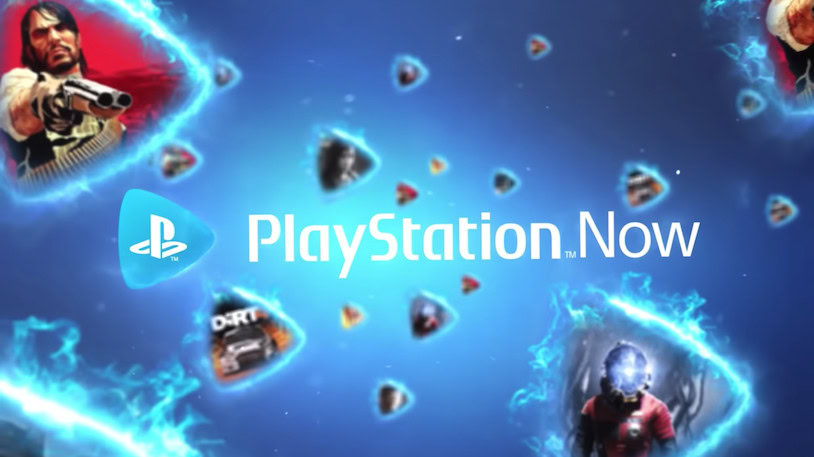
PlayStation Now has been around for a while and offers a relatively wide selection of Playstation 2, 3, and 4 games to stream or download on your Playstation console or Windows PC. The service costs $9.99 per month, with considerable discounts if you buy in three- or 12-month increments.
Currently, there are more than 800 titles on offer, including some blockbuster titles like Metal Gear Solid V, Bloodborne, Fallout 4, and Ni No Kuni, plus PlayStation exclusives like The Last of Us and Uncharted.
NVIDIA GeForce Now

Graphics card giant NVIDIA’s cloud gaming solution GeForce Now has finally left beta in late 2019 after the better part of a decade. It allows you to stream your games from Steam or other marketplaces (including free-to-play titles like Fortnite) from the company’s high spec cloud servers. Supported titles can even access the latest and greatest ray tracing technology, although it’s only available for premium subscribers.
The good news is that GeForce Now can be tried for free by anyone, although there are queue times and your sessions are limited to one hour. The premium tier is just $5 a month, reducing queue times and increasing session length to six hours. The bad news is that many publishers are pulling their games from the platform, so make sure your favorite game is supported before investing too heavily.
Geforce Now is available on PC, Mac, Android, and TVs via the NVIDIA Shield TV box.
Vortex
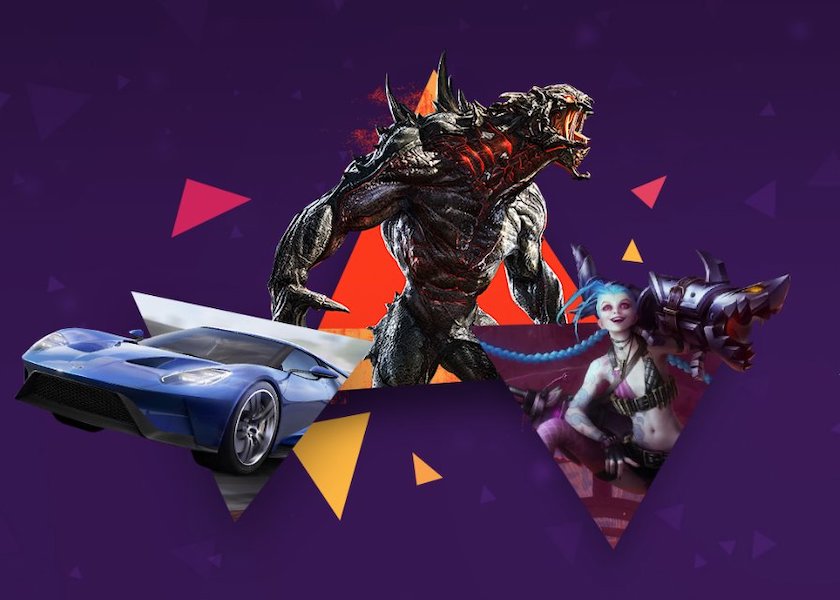
Game streaming service Vortex takes a different approach to the idea of Netflix for video games. Its pitch is simple: select from a large library of PC games, and stream them to almost any internet-connected device, all for as little as $9.99 a month. In practice, it’s a little more complicated.
Sure, you can definitely play games like the Witcher 3, League of Legends, and Fallout 4 on Android, but you’re limited to 50 hours of gameplay a month on the basic plan. You can pay as much as $28 a month for the ultra plan, but it’s still limited to 140 hours a month. Plus, even at the highest tier you still have to buy a license for AAA titles like Grand Theft Auto V and Rainbow Six Siege.
Vortex offers apps for Android and Windows, and also supports streaming through Chrome browsers.
Shadow
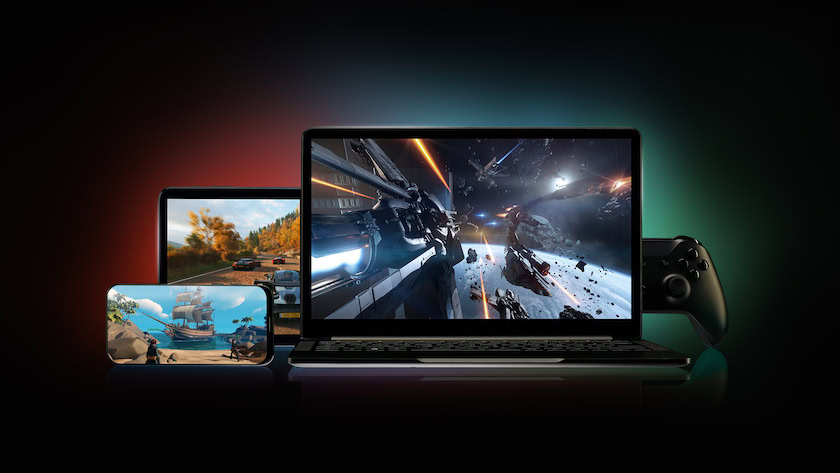
Shadow works a little differently from other cloud gaming services. Rather than offering an app-based interface, which you would then link with an Epic Store or Steam account, Shadow offers a full virtual Windows PC interface. That’s right, this is a full cloud-based high-end PC and you can not only play games on it, but run more demanding programs like Photoshop or Premiere Pro.
This service offers a wider array of capabilities, but it’s also a bit on the expensive side. The annual subscription plan costs $24.99 per month, and the month-to-month plan costs $34.99 per month. Still, it’s the only option that can also completely replace your PC.
Shadow is compatible with PC, Mac, Linux (in beta), Android, and Android TV.
Project xCloud
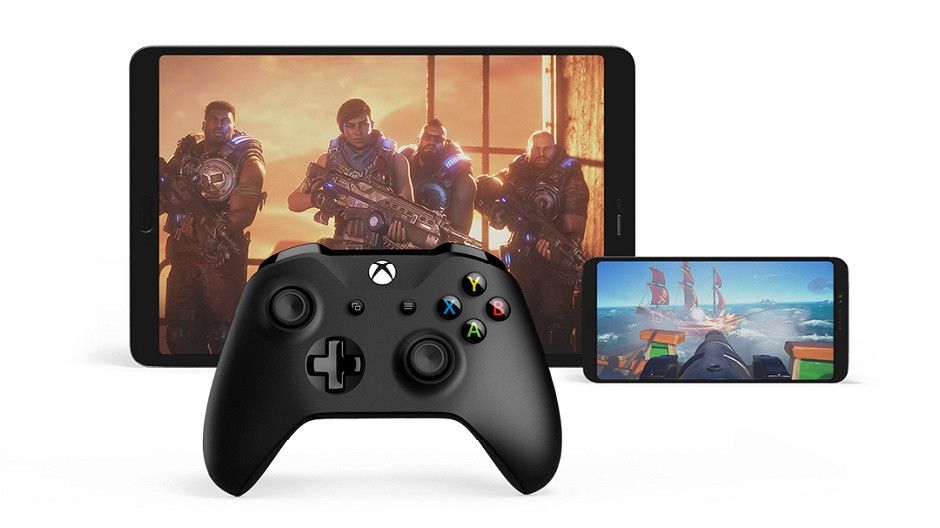
We don’t know too much about Microsoft’s Project xCloud game streaming service, but it has the potential to dominate the competition. It’s still in beta and only works on phones at the moment, but it already looks to be a strong contender.
Microsoft is putting its full weight behind the service, stating that not only will it work for Windows and mobile devices, it will also be a core element of its upcoming Xbox Series X consoles. For now though, xCloud is positioned to complement the company’s console offerings rather than replace them. Check out our beta impressions at the link below.
Read also: Sorry Stadia, I’m backing xCloud to be the big player in the cloud gaming wars
Cloud gaming is well on its way to becoming a huge force in the games industry. Soon enough many of us might be playing our favorite AAA games on our phones, mediocre laptops, and Chromecasts. While there are still a number of hurdles to cross before cloud gaming is truly accessible technology, it feels like we’re on the cusp of something big.